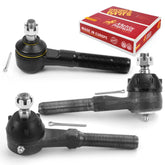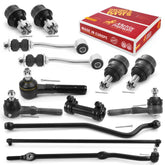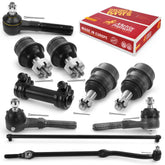Everything You Need To Know About Wheel Alignment

Almost everyone has heard of the nursery rhyme ‘The wheels on a bus go round and round’. According to the poem and in reality the wheels do go round but they can also go sideways if they are misaligned.
Most people are unaware that wheel alignment is a thing and some of us who know about it take it lightly.
Here, we will answer all of the most frequently asked questions related to wheel alignment.
What is wheel alignment?
Wheel alignment is the process by which the angles of a tire are adjusted to the manufacturer’s specification. The purpose of this process is to reduce tire wear and to ensure the car always travels straight when the steering is in its natural position. If the vehicle is misaligned, the driver has to make corrections in the steering input, which isn’t something you want to do everyday.
When it’s needed (signs)
Fortunately, you can tell almost immediately if the car is misaligned. There are some clear signs which if known can help you make a quick decision.
Steering wheel out of position
When you buy a brand new car, the steering is adjusted to be straight and pointing right in the direction of the road. That’s because the wheels are aligned. However, when the alignment is off, the steering is also off center. That’s the first sign you will get in case if misalignment.
Uneven Tread Pattern
It’s not everyday that you inspect the tires for a diminishing tread pattern. But you should because that is where you can see signs of a misaligned car. If the wheels are aligned according to the manufacturer’s specifications, the tread will wear out evenly. On the contrary, you will see uneven tread pattern which will reduce the life of your tires.
Wayward Movement
The most effective test to check for wheel alignment is to point the car straight on an empty road and then leave the steering. If the vehicle starts to sway and move in a different direction, the wheels are not aligned.
Vibration at High Speeds
Another way to check for misalignment is by driving at a high speed. Usually, misaligned tires cause vibration, which is felt on the steering wheel as well as inside the car. If you experience something similar, you should go straight to a tire shop to get your vehicle tested.
Types of Wheel Alignment
Before you go to a workshop for wheel alignment, you should check the car’s user manual to learn the type of alignment your vehicle needs.
2-Wheel Alignment
This is the most common type of alignment. It's usually for cars that have a single beam rear axle and independent suspension on the front-end.
4-Wheel Alignment
All vehicles that have independent suspension on each wheel require this type of alignment.
How it’s measured
Tracking is measured using four basic principles.
- Caster
It refers to the steering axis with respect to the vertical axis. If the angle is behind the steering axle we call it a positive caster. Whereas, if the angle is in front, it's called a negative caster.
- Camber
It measures the tilt of the tires. The tires can point outward from the top (positive camber) or outward from the bottom (negative camber). A negative camber is commonly preferred.
- Toe
When you view the car from the top, the toe refers to how much the front wheels turn in to the center or out from the center.
- Thrust
It is measured by an imaginary line that is drawn from the middle of the rear axle to the front axle.
Reasons for Misalignment
The wheels on a car are properly aligned from the dealership. However, when you drive there are several potholes and bumps on the road, which destroy the natural alignment of the car.
Moreover, when you get into an accident the wheel alignment also goes awry. Preventing wrong driving and accidents will let your car to stay aligned.
How long does it take?
It usually takes half an hour to an hour for wheel alignment. You park the car, the technician puts on the machine, measures the initial angles and then changes it to the specified limits. Afterward, the vehicle is taken on a drive to check the steering angle and voila! All done!
Wheel alignment Vs. Wheel balance
Wheel balancing is done to evenly distribute the weight of the tire on the rim. On the other hand, wheel alignment is more structural and refers to the positioning of the wheels.
Does alignment differ depending on type of vehicle?
Yes, the angles are different on each car. You should follow the manufacturer’s specifications to find out the right one for your vehicle.
Now that you know the answers to these questions, you also know that driving can be dangerous and difficult if your car is misaligned.
To stay tuned with more blogs for issues relating to your car's maintenance make sure to sign up for our newsletter on our website.









